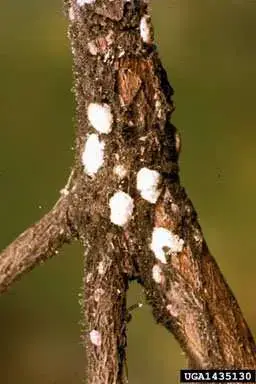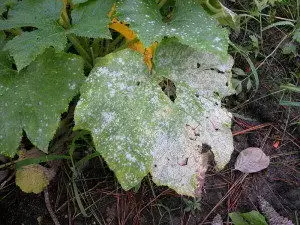Crepe Myrtle Diseases & Treatments
Crepe myrtles have several diseases and insects they are prone to. RTEC TreeCare’s certified arborists have the tools and experience to treat your crepe myrtle.
Crape Myrtle Bark Scale:
These pests are the most common crape myrtle nuisance in our area. They’re small, flat, reddish-brown scale insects that attach themselves to the tree bark and consume the sap. Due to their stagnant unmoving nature, these pests are unique, often not appearing as insects at all. The most frustrating result is the sticky substance they produce, which is known to drip from the tree canopy. You can learn more about this common pest on our other blog here.
Symptoms: Clusters of white insects on the bark, sticky honeydew dripping from the leaves, branch dieback, early leaf drop, less vigorous blooms, black sooty mold on lower vegetation.
Call: (703) 573-3029
Powdery Mildew:
Powdery Mildew is a tree fungus that coats the tree’s leaves, blocking the process of photosynthesis . Every year trees and shrubs rely on photosynthesis to create food for new leaf growth. When this process is interrupted by powdery mildew the food reserves aren’t replenished and the tree/shrub’s growth will be stunted which can affect overall health. The stress caused by Powdery Mildew also makes the tree more susceptible to other diseases and insect infestations.
Symptoms: Powdery mildew is characterized by spots or patches of white to grayish, talcum-powder-like growth on the upper side of leaves.
Cercospora Leaf Spot:
The tree fungus begins as a small spot on the leaves. As the disease progresses more spots appear until the leaf ceases to function as the site of the tree’s food production process and falls off the tree.
Symptoms: Round leaf spots (may have purple or dark brown borders), and tiny black flecks (fungal spores) in the center of the spots.
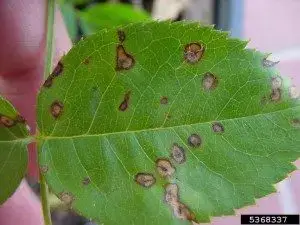

Crape Myrtle Aphids:
Also known as plant lice, aphids are among the most destructive tree bugs. These plant-sucking insects feed on the sap of a tree or shrub. Their excrement, referred to as honeydew, is commonly mistaken for sap dripping from a tree’s canopy.
Symptoms: Drooping leaves, yellow spots, black small dots on the underside of the leaves (what aphids look like to the naked eye), honeydew, sooty mold, and ants on the tree.
Japanese Beetles:
First brought to the United States in 1916 in a shipment of iris bulbs, these invasive tree bugs can defoliate an entire tree in a matter of days.
Symptoms: Large amounts of brown chewed leaves, skeletonized leaves (only the veins of the leaf left intact), leaves falling off trees, and trees that look scorched by fire from a distance.
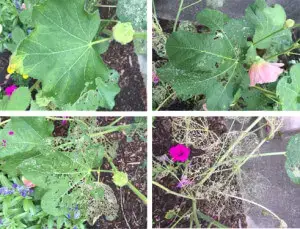
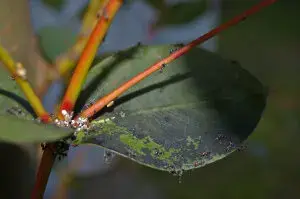
Sooty Mold:
Sooty mold is a fungus that grows on top of honeydew (the excrement of plant-sucking insects) and coats the leaves to the point where they can no longer absorb sunlight. This interrupts photosynthesis and the tree will not be able to produce the nutrients they need for survival. If your trees and shrubs are turning black you most likely have a sooty mold problem caused by an insect infestation.
Call: (703) 573-3029
Request a Free Consultation
[trustindex no-registration=google]


